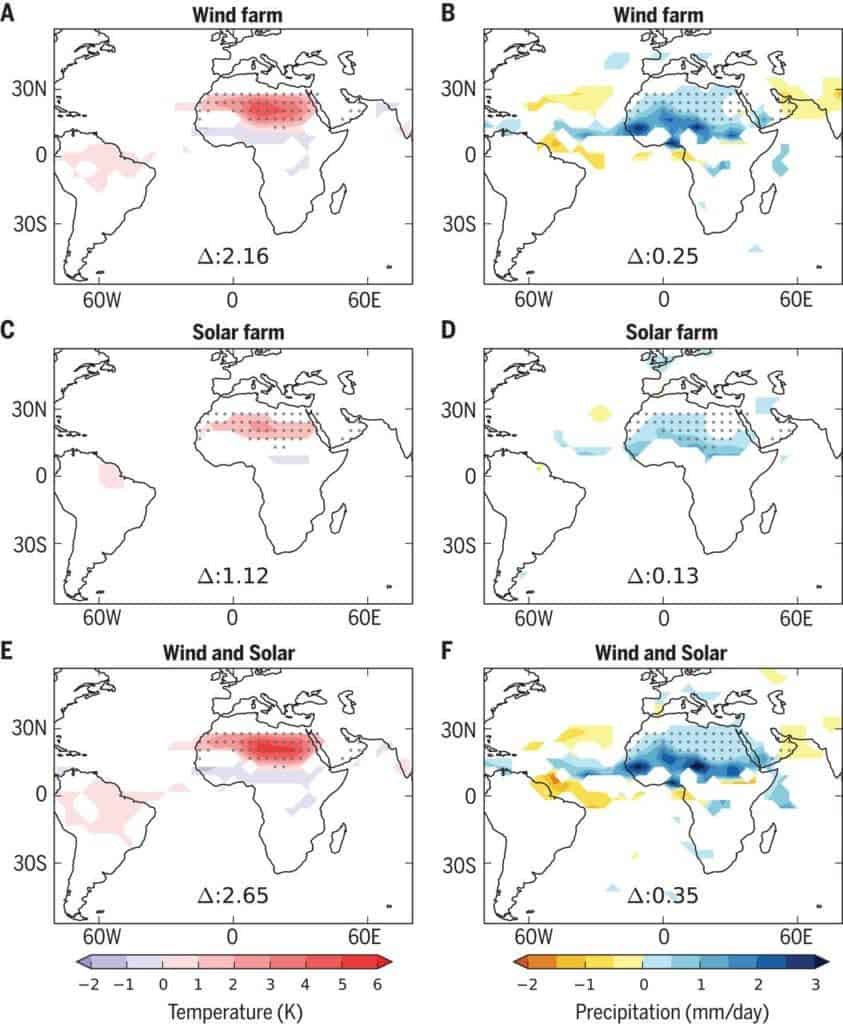Installing solar and wind power in the Sahara would have benefits for both the region and the world’s grids, a new paper concludes.

The Sahara may be a deserted place, but according to the new study, green energy could also help the desert itself become greener: filling in all that empty space with solar and wind farms would help liven up the place — all while supplying ample green energy. Researchers from the University of Illinois at Urbana-Champaign (UI) found that such installations would increase local precipitation levels, which in turn would lead to increased vegetation.
The paper also reports that such power plants would also increase local temperatures under current conditions. However, this effect would likely be ‘very different’ in the field, due to the shift in vegetation patterns associated with changes in precipitation.
Greening Sahara
“Previous modeling studies have shown that large-scale wind and solar farms can produce significant climate change at continental scales,” says lead author Yan Li, a postdoctoral researcher in natural resources and environmental sciences at the UI.
“But the lack of vegetation feedbacks could make the modeled climate impacts very different from their actual behavior.
The team focused on the Sahara for several reasons: for starters, it’s the largest desert in the world. It’s also sparsely inhabited, and “highly sensitive to land changes”, Li explains. Furthermore, its geographical position — in Africa, but fairly close to both Europe and the Middle East — would also make it an ideal place to build plants that cater to these areas’ large (and growing) energy markets.
Li and colleagues simulated the effects of wind and solar farms covering in excess of 9 million square kilometers (roughly 3.5 million sq miles). On average, the simulated wind plants would churn out 3 terawatts, and solar ones 79 terawatts, of electrical power per year. Needless to say, that is a lot of powerplants: global energy demand in 2017 totaled about 18 terawatts, making the team’s scenario a tad overkill.
But what the team really wanted to see was what environmental effects solar and wind installations would have on the desert — as such, they needed to model the plants on a huge scale.
Their work revealed that wind farms do indeed increase near-surface air temperatures. Changes in minimum temperatures were greater than those seen in maximum temperatures, the team adds — i.e. wind farms increase minimum temperatures more than maximum ones.
“The greater nighttime warming takes place because wind turbines can enhance the vertical mixing and bring down warmer air from above,” the authors wrote.
Precipitation levels also increased by as much as 0.25 millimeters per day on average in regions with wind farm installations. The Sahel region saw the largest increases in average rainfall — 1.12 millimeters per day where wind farms were present.

Image credits Li // Nature.
Overall, the increase in precipitation levels was double “that seen in the control experiments,” Li said. Such levels of precipitation would, in turn, lead to increased vegetation cover, he adds, “creating a positive feedback loop”.
“The rainfall increase is a consequence of complex land-atmosphere interactions that occur because solar panels and wind turbines create rougher and darker land surfaces,” says study co-author Eugenia Kalnay from the University of Maryland.
Solar farms had a similar effect on temperature and precipitation. Unlike the wind farms, solar installations had almost no effect on wind speeds.
Put together, the changes seen in the team’s model could have a very positive effect on the economic and social well-being in the Sahara, Sahel, Middle East, and other nearby regions, the team writes. The combination of clean (and cheaper) energy and increased rainfall and vegetation would also help boost local agriculture, they add.
The paper “Climate model shows large-scale wind and solar farms in the Sahara increase rain and vegetation” has been published in the journal Nature.






